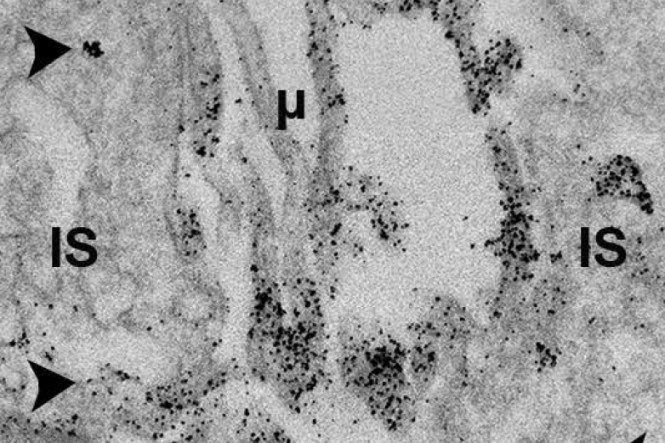CRB2 in MGC and photoreceptor cells in cynomologus macaque retina
Pete Quinn in the group of Jan Wijnholds (Dept. of Ophthalmology) at the LUMC is interested in the role that the Crumbs homolog-1 (CRB) genes play in the early development of hereditary eye diseases (retinitis pigmentosa and Leber congenital amaurosis) in children. To investigate the physiological role that CRB genes play they analysed mouse retinas lacking both CRB1 and CRB2 proteins in retinal Muller glial cells (MGCs) and investigated the localization of CRB 1 and CRB2 in non-human primate retinas. Ultrastructural analysis by the section of electron microscopy showed that the CRB 1 and 2 proteins localized to the subapical region adjacent to the outer limiting membrane in MGC and photoreceptor cells.
